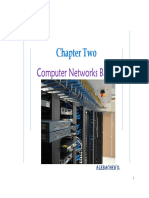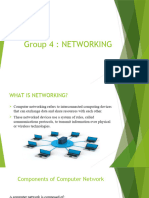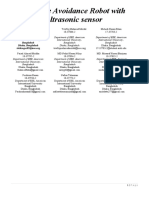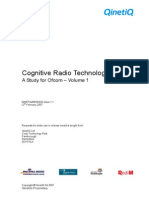0% found this document useful (0 votes)
13 views41 pagesBasic Concepts of Computer Networking
The document presents an overview of basic computer networking concepts, including types of networks such as PAN, LAN, WLAN, and WAN, along with their definitions and examples. It also covers essential network equipment like routers, switches, and firewalls, as well as various network topologies including bus, star, ring, mesh, and tree topologies, detailing their advantages and disadvantages. This comprehensive guide aims to provide foundational knowledge for understanding computer networking.
Uploaded by
kouamenkegoumfrancstevenCopyright
© © All Rights Reserved
We take content rights seriously. If you suspect this is your content, claim it here.
Available Formats
Download as PPT, PDF, TXT or read online on Scribd
0% found this document useful (0 votes)
13 views41 pagesBasic Concepts of Computer Networking
The document presents an overview of basic computer networking concepts, including types of networks such as PAN, LAN, WLAN, and WAN, along with their definitions and examples. It also covers essential network equipment like routers, switches, and firewalls, as well as various network topologies including bus, star, ring, mesh, and tree topologies, detailing their advantages and disadvantages. This comprehensive guide aims to provide foundational knowledge for understanding computer networking.
Uploaded by
kouamenkegoumfrancstevenCopyright
© © All Rights Reserved
We take content rights seriously. If you suspect this is your content, claim it here.
Available Formats
Download as PPT, PDF, TXT or read online on Scribd
/ 41






















































































